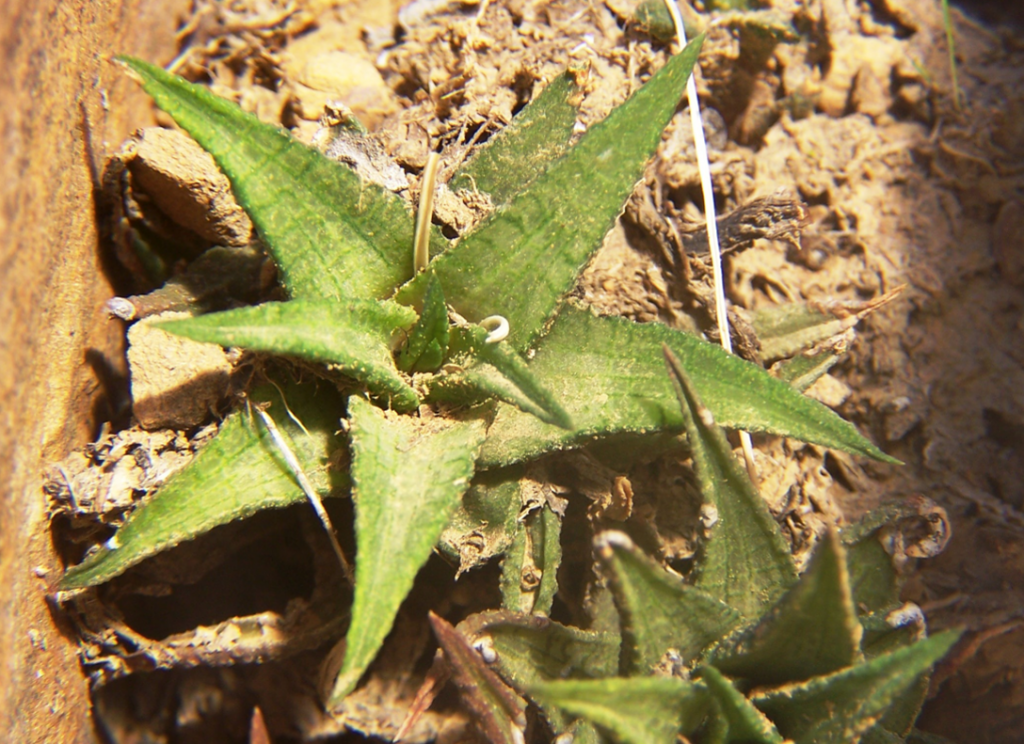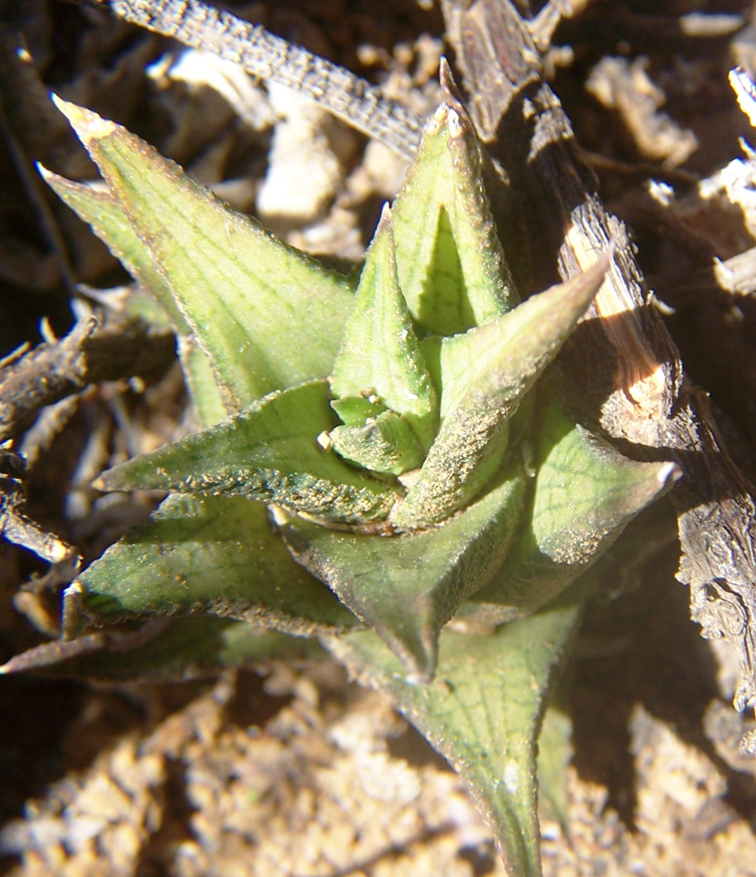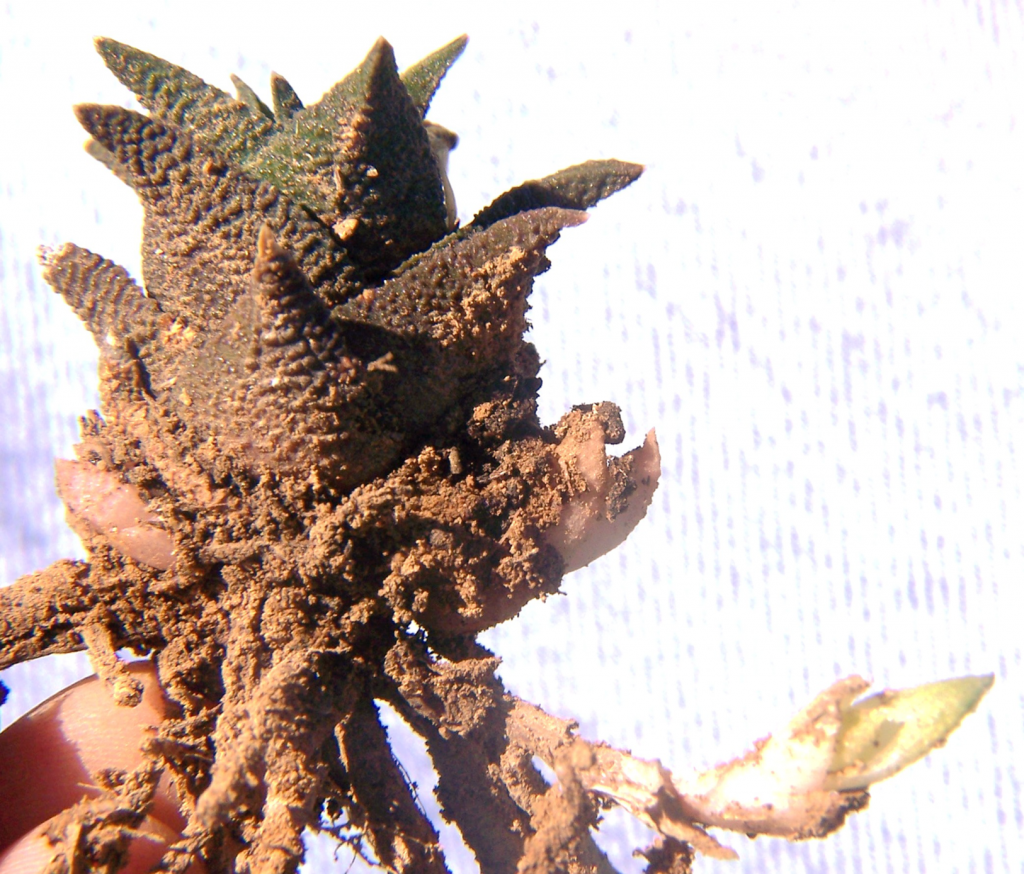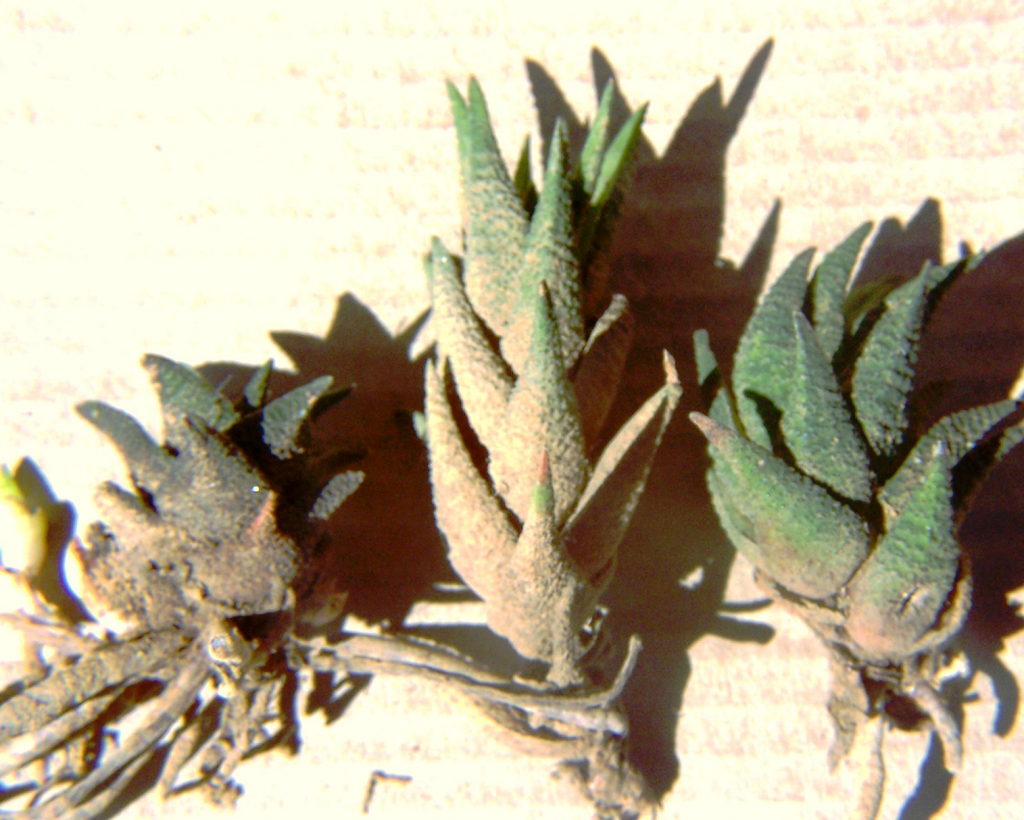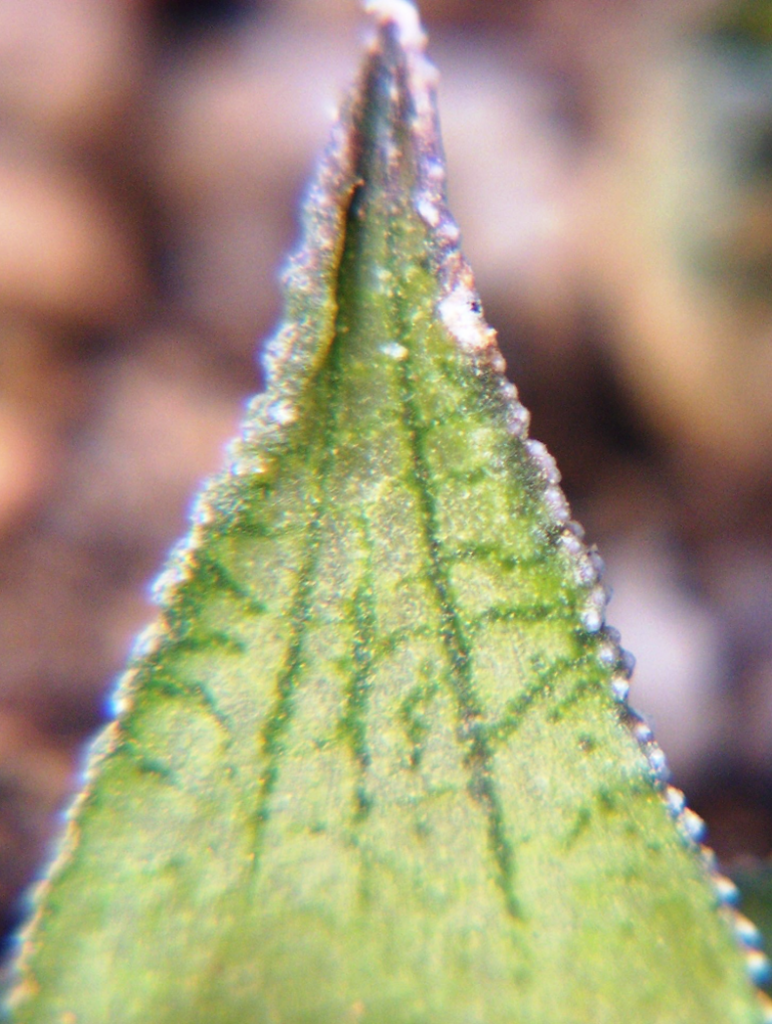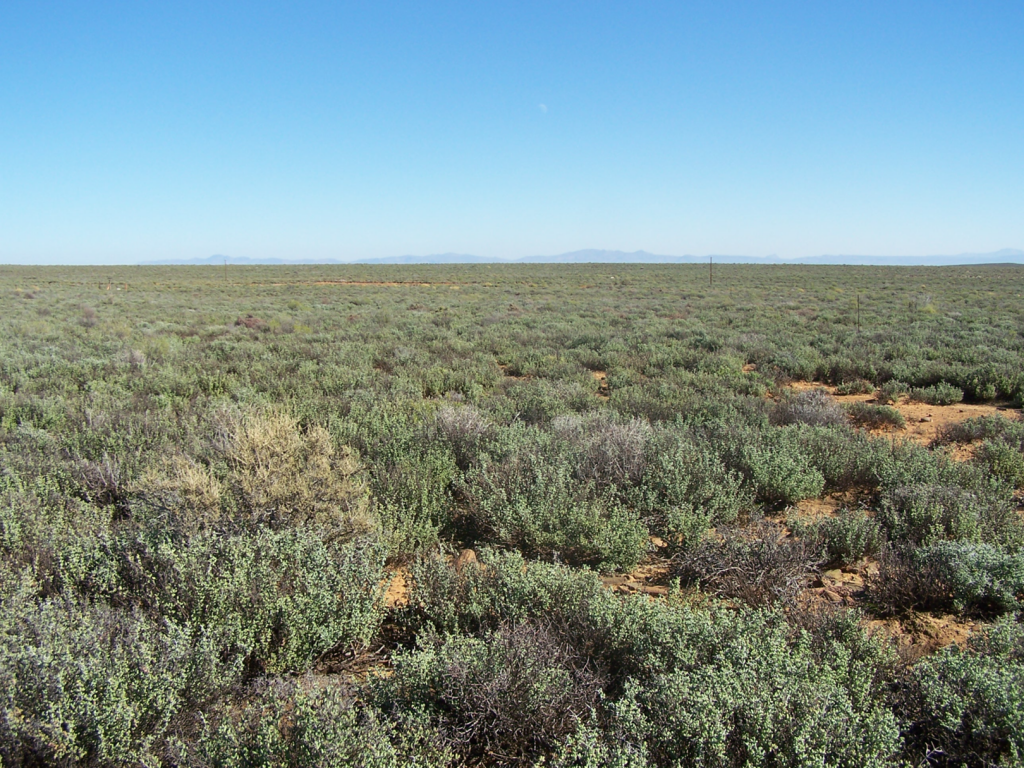I wrote “What is Haworthia schoemanii? in reference to the statements I have made that I did not want to write any more. But also kind of intimating that really we need to find some sense in all this “namenklutter”, while at the same time I am drifting away from the community that controls it and isolated from that which generates most of it. My note was about the names ‘schoemanii’ and ‘crausii’; and their perceived improbable existence as biological systems. This is then just a very short note to elaborate on a record of mine of H. venosa subsp. granulata that I gave as from Patatsriver Road. This was partly because I did not want to advertise too openly where the site was and because I was not even sure of the farm name. Nowadays, while I fully appreciate there are some not very nice people who do and will abuse the situation; I do not believe there is any merit whatsoever in secrecy. It seems to me that this simply exacerbates the whole situation just as does the insistence that conservation laws that so effectively exclude people from participation, contribute to conservation.
When I transferred to the Department of Agriculture in 1987, I became involved in vegetation regeneration. This had been initiated in the Western Cape as early as 1936. Without a single indication of success I was tasked with the job of continuing the great work. The department had used a site at Bantamsfontein in the southeastern Tanqua Karoo that is accessed via the Patatsriver Road that links Ceres by a country road directly with Matjesfontein that is on the main highway Cape Town to Laingsburg and on to the north. The site can best be described as a rather homogenous stand of Ruschia spinosa on a low-lying and flat area with very little surface rock. It had been used for a reseeding experiment. The only present evidence, after nearly 30years is a few scattered plants of Atriplex nummularia outside the treated plots. Our visit in 1988 was to attempt sowing of Osteospermumj sinuatum into the Ruschia as nurse plants using a rather inventive handseeder. I am sure it could only have been this close attention to those nurse plants that drew my attention to the very cryptic plants of ‘granulata’. (I must mention here the abhorrence that has been expressed at this violation of some sort of ethic that requires the use of virtual the full Latin set of epithets for every mention. I strongly suspect that this is only to vindicate a wholly false belief in a reality that the names seldom have).
The plants I saw were seldom stemmed and what I grew and propagated were smallish stemless plants generated by rhizome (underground shoot). The habitat is/was quite unlike the high rocky slopes that I would have expected to find these plants in and I often wondered about this issue. Unfortunately my activities in vegetation ecology, while allowing me so much time in the field, required me to be where the animal action was and focused on general vegetation rather than the sort of exploration and observation I would have liked to do in terms of my own interest. The consequence is that I learned very little about Haworthia in those years.
After my recent experience with ‘schoemanii’ and Steven Hammer’s expressed interest in Conophytum distribution, I took the opportunity of going back to Bantamsfontein. The farm is owned by Jan du Toit, a leading light in the fruit farming industry of the Koue Bokkeveld in the Ceres District. The farmers there traditionally also owned farms in the Tanqua/Ceres Karoo, and stock would be driven, or later transported, there for grazing during the winter months. Production has declined dramatically over the last 60 years and many farms are now owned by people who have “invested in a seaside cottage in the Karoo”. Mr Du Toit does still continue there with sheep though his business is 98% fruit. The vegetation is in excellent condition.
Daphne and I started searching in the old experimental site and quickly found plants, few and scarce as they were. Our usual response in a situation like this is to ask “Now where are they really?” In other words, to try and establish where the preferred habitat actually was. We crossed to the west side of the road and walked a long way without finding any more plants. We only saw a few H. arachnoidea ‘tanqua’. Then we drove a short distance northwards to a rocky ridge that looked more probable, and as surely there were the plants in abundance. Mr Du Toit was our host for the night and the next day we searched south of the farm house, finding ‘granulata’ and ‘arachnoidea’ over a wide area.
The pictures will illustrate the variation. The plants may be stemless or stemmed and propagate by short offsets or by longish rhizome. The leaves may be quite slender and acuminate or short and squat; unmarked on the inner upper surface or plain.
I have tried to understand the geology of the area and get some idea of the significance of parent materials in relation to soils and the distribution of plant species. I am quite convinced that this is really important, but I just cannot formulate why this is. Just as the SW Cape area from George to Caledon can be seen to vary from east to west, so is it that the Karoo is divided. In the latter case it is more easily explained by the fact that the parent sediments of the Karoo Supergroup come from essentially two different sources. The smaller southwestern area was fed in the times of Gondwanaland by fairly large particle
sediments from what is now South America (the Parana basin), while the larger northwest was fed by finer turbidites from northern and western (the Karoo Basin). Dwyka Tillite of earlier glacial origin is exposed on the western and southern boundaries, Dolerites of later origin dominate the north while the eastern boundary of the Tanqua karoo is contemporary deposition. In skeletal soils it seems obvious that source material strongly dictates mineralogy, derived soil texture and consequently vegetation. Overriding this geology is topographical feature and climate pattern.
I find it very odd, considering the short span of human life, that those events from as long ago as 545m years may be so relevant to the present and to plant species whose history seems to be so recent. It is also very odd, for me at least, to understand why so many of the Tanqua Karoo endemics are in the oldest formation of the Ecca Geological Group i.e. Tierberg Formation, and not in the overlying three.
Acknowledgement:
Mr Jan du Toit for gracious hospitality and kindness. Dr De Ville Wickens for information on the geology of the Tanqua Karoo.

